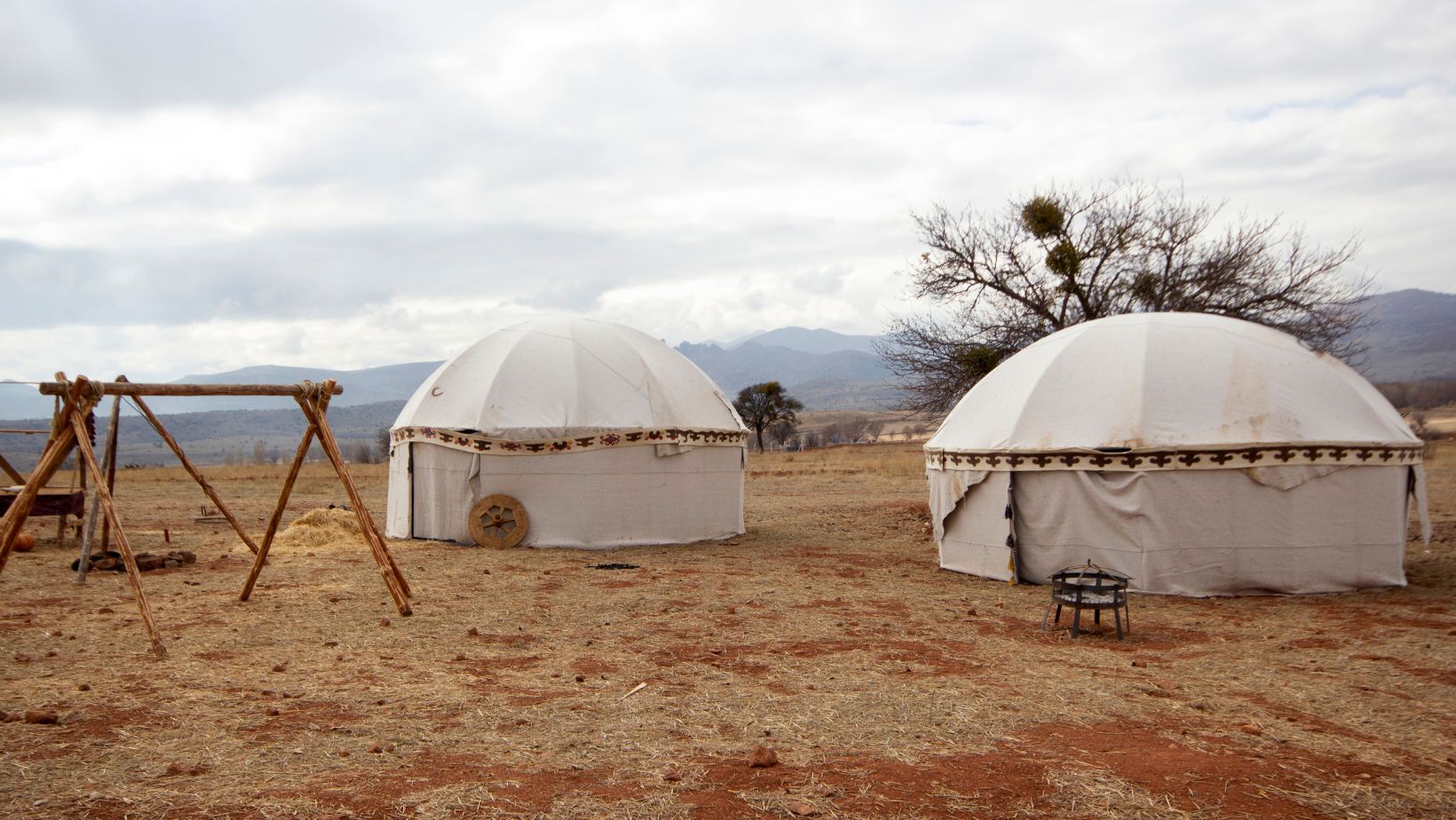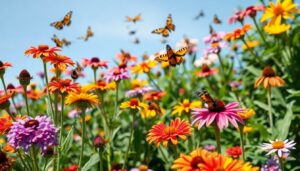Key Takeaways
- Definition of Nomadic Lifestyle: A nomadic lifestyle involves constant movement and minimal attachment to physical locations, fostering flexibility and a connection with nature.
- Types of Nomadism: Key categories include traditional nomadism (seasonal migrations), digital nomadism (remote work while traveling), lifestyle nomadism (freedom and adventure), vagabonding (long-term travel), and van life (living in vehicles).
- Historical Evolution: Nomadic lifestyles have evolved from ancient survival methods to contemporary forms enabled by technology, exemplified by digital nomadism.
- Benefits: Advantages of nomadic living include enhanced flexibility, personal freedom, greater cultural exposure, and immersive learning experiences through interaction with diverse communities.
- Challenges: Nomads face social isolation, economic instability, and environmental impacts, highlighting the need for a balance between travel and sustainability.
- Modern Trends: The rise of eco-nomadism emphasizes sustainable practices, focusing on minimalism and environmental conservation within a mobile lifestyle.
The nomadic lifestyle captivates many with its promise of freedom and adventure. This way of living, characterized by constant movement and a lack of permanent residence, has roots in ancient cultures but has gained renewed popularity in today’s fast-paced world. For some, it’s a thrilling escape from the confines of traditional living, allowing individuals to explore diverse landscapes and cultures.
Understanding the meaning of a nomadic lifestyle goes beyond mere travel. It encompasses a mindset that embraces flexibility and spontaneity while fostering a deep connection with nature and community. As more people seek alternatives to conventional living, the allure of a nomadic existence continues to grow, inviting exploration into its benefits and challenges.
Nomadic Lifestyle Meaning
A nomadic lifestyle encompasses a way of living characterized by constant movement and minimal attachment to physical locations. This lifestyle type promotes flexibility, spontaneity, and a strong connection to nature and community.
Key Characteristics of Nomadic Living
- Mobility: Nomadic individuals frequently change their location, whether through travel, work, or exploration.
- Minimalism: Nomads often keep possessions to a minimum, focusing on essentials to facilitate mobility.
- Community-Oriented: Many nomadic individuals form strong connections with fellow travelers and local communities, fostering a sense of belonging.
- Adaptability: Nomads adapt to various environments, cultures, and situations, embracing change.
- Nature Connection: Many nomads prioritize experiences in natural settings, often seeking outdoor activities that bring them closer to the environment.
Types of Nomadic Lifestyles
- Traditional Nomadism: Involves groups relocating based on seasonal patterns for resources, commonly seen with herders and pastoralists.
- Digital Nomadism: Involves working remotely while traveling, often relying on technology to maintain a work-life balance.
- Lifestyle Nomadism: Emphasizes personal freedom and adventure, with individuals relocating as desired without a fixed schedule.
- Vagabonding: Involves long-term travel without a defined return date, focusing on exploration over work commitments.
- Van Life: Entails living in a vehicle, combining home and travel for a flexible living experience.
Historical Context of Nomadic Lifestyle
Nomadic lifestyles date back thousands of years, driven by the need for survival and the search for resources. Over time, various cultures have embodied this way of life, adapting to changes in their environments and societal structures.

Evolution Over Time
Nomadic lifestyles evolved through several distinct phases. Early humans practiced foraging and hunting, moving with the availability of food sources. As agriculture developed around 10,000 BCE, some communities transitioned to semi-nomadic practices, cultivating crops while still relying on seasonal migrations. In the Middle Ages, nomadism thrived through pastoral societies that herded livestock across vast regions, such as the Mongolian tribes. In contemporary society, digital nomadism emerged with advancing technology, allowing individuals to work remotely while exploring diverse locations.
Famous Nomadic Cultures
Various cultures exemplify the rich history of nomadism.
- Mongolian Nomads: Renowned for their horseback herding, Mongolian nomads migrate seasonally, maintaining a strong cultural identity rooted in the steppes.
- Bedouins: These desert dwellers famously traverse arid landscapes, adapting their lifestyle to the harsh conditions of the Middle East.
- Sámi People: Indigenous to the Arctic regions, the Sámi follow reindeer herding patterns, balancing traditional practices with modern influences.
- Romani: Originally from India, the Romani people became known for their migratory lifestyle across Europe, creating a rich tapestry of culture influenced by various nations.
Each of these cultures not only highlights the historical significance of nomadism but also demonstrates its adaptability and continuation in modern contexts.
Modern Nomadic Lifestyles
Modern nomadic lifestyles encompass diverse ways of living that reflect the desire for mobility and freedom. Two prominent categories include digital nomadism and eco-nomadism, each with distinct characteristics and motivations.
Digital Nomadism
Digital nomadism represents a modern adaptation of the nomadic lifestyle where individuals leverage technology to work remotely. Professionals in fields such as software development, content creation, and marketing often travel while maintaining their careers. According to a report by MBO Partners, approximately 15.5 million Americans identify as digital nomads. These individuals benefit from improved work-life balance, diverse cultural experiences, and the ability to explore new locations while generating income. Popular destinations for digital nomads include Bali, Chiang Mai, and Lisbon, known for their robust internet access and supportive communities.
Eco-Nomadism
Eco-nomadism focuses on sustainable living practices while embracing a mobile lifestyle. Individuals engaged in eco-nomadism prioritize environmental conservation, often living in harmony with nature. This lifestyle promotes minimalism and often includes practices such as off-grid living, sustainable agriculture, and eco-friendly transportation methods. Eco-nomads may travel in camper vans, tiny homes, or even through community-supported agriculture. Their philosophy emphasizes reducing carbon footprints, preserving natural resources, and fostering a sense of community. Various organizations support eco-nomadism, providing resources for individuals interested in sustainable practices while embracing a nomadic way of life.
Benefits of a Nomadic Lifestyle
A nomadic lifestyle offers various benefits that resonate with adventurous spirits and those seeking non-traditional living arrangements. Key advantages include flexibility, freedom, and enhanced cultural exposure.
Flexibility and Freedom
Flexibility characterizes the nomadic lifestyle, allowing individuals to choose when and where to move. Options range from selecting new destinations based on seasons to avoiding overcrowded tourist spots. Freedom enhances lifestyle choices, as nomads can adapt their daily routines according to personal interests or local opportunities. No fixed commitments to jobs or leases enable spontaneous travel plans and unique experiences. Many nomads embrace minimalism, simplifying their lives and focusing on what truly matters.
Cultural Exposure
Cultural exposure significantly enriches the nomadic experience. Constant movement introduces individuals to diverse customs, languages, and cuisines. Engaging with local communities fosters genuine connections and deepens understanding of different perspectives. Many nomads find inspiration in the art, traditions, and histories of the places they visit. This exposure cultivates a global mindset and appreciation for cultural diversity, enhancing personal growth and broadening horizons. Nomads often participate in local events and activities, benefiting from immersive educational experiences that promote cultural exchange.
Challenges of Living Nomadically
Living nomadically presents various challenges, particularly in social, economic, and environmental contexts. Individuals adopting this lifestyle often face unique difficulties that require careful navigation.
Social and Economic Issues
Nomadic individuals encounter social isolation due to constant movement. Building lasting relationships becomes challenging as they frequently change locations. Limited access to social services, such as healthcare or education, poses additional problems, especially in rural areas with fewer resources.
Economic instability presents another hurdle. Many nomads rely on remote work or transient jobs, which may not guarantee a steady income. Seasonal fluctuations in employment can lead to financial insecurity. Additionally, legal and logistical challenges, such as obtaining visas or finding suitable housing, complicate the pursuit of sustainable living while traveling.
Environmental Impact
Nomadism often influences environmental sustainability, with mixed effects. Traveling frequently increases carbon footprints due to transportation methods that may rely heavily on fossil fuels. Overutilization of natural resources in popular travel destinations can lead to habitat degradation.
However, many nomads embrace eco-nomadism, prioritizing sustainable practices. They opt for eco-friendly transportation and minimize waste through minimalistic lifestyles. By choosing to protect natural environments, they contribute positively to the preservation of ecosystems. Balancing travel with environmental responsibility remains a vital challenge for those living nomadically.
Blend of Freedom And Adventure
The nomadic lifestyle represents a unique blend of freedom and adventure that resonates with many in today’s fast-paced world. It encourages individuals to embrace change and foster a deep connection with their surroundings. Whether through digital nomadism or eco-nomadism, this way of life offers opportunities for personal growth and cultural enrichment.
However, it’s essential to recognize the challenges that come with constant movement. Social isolation and economic instability can pose significant hurdles. By understanding both the benefits and drawbacks of nomadism, individuals can make informed choices about whether this lifestyle aligns with their values and aspirations. Ultimately, the nomadic journey is as much about the experiences gained as it is about the destinations reached.


